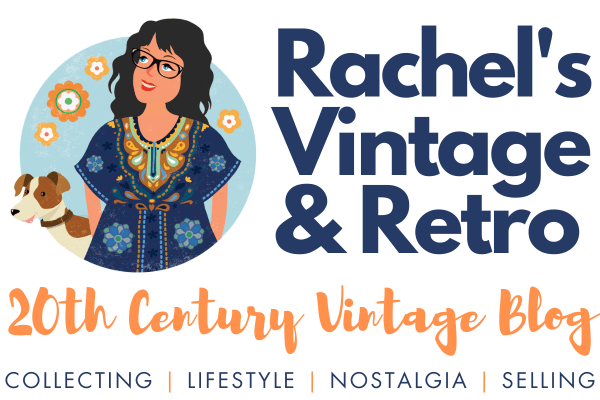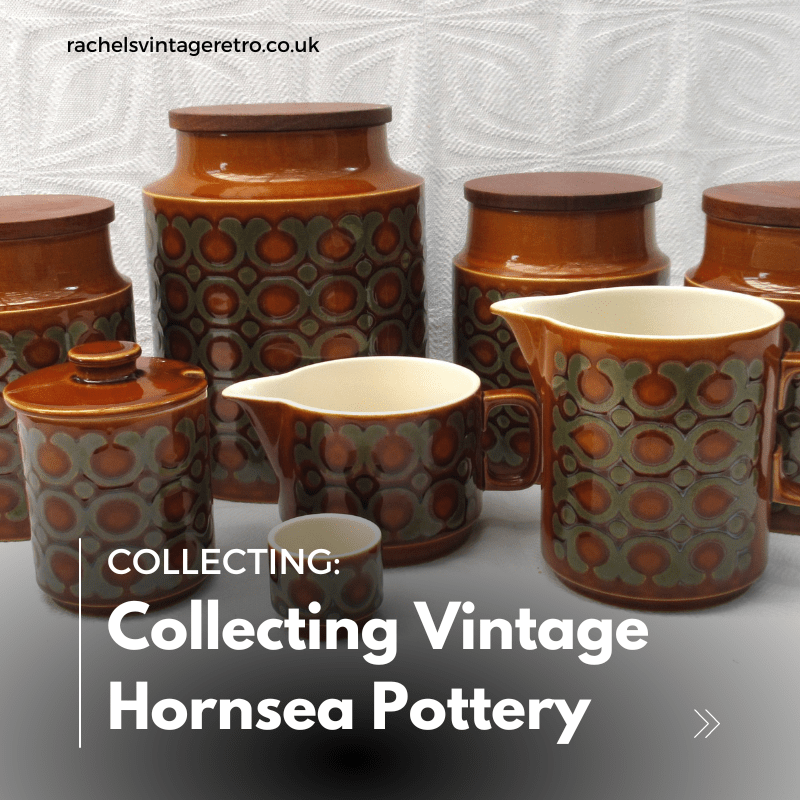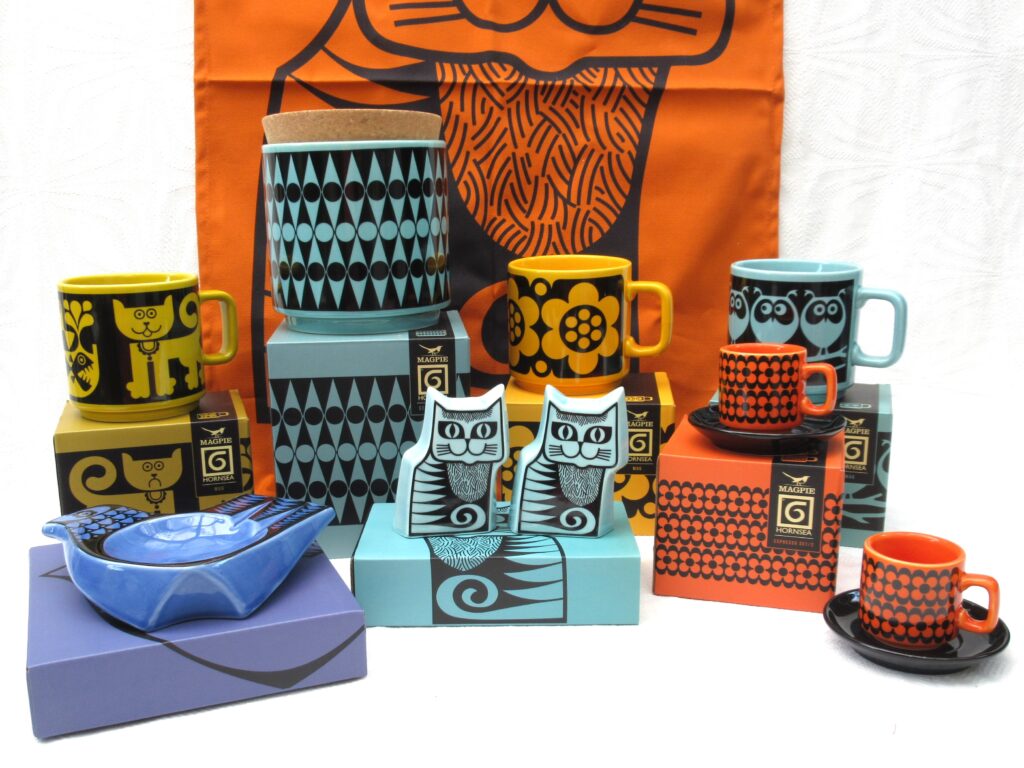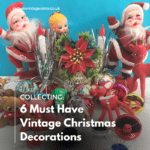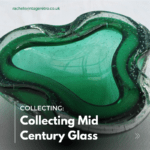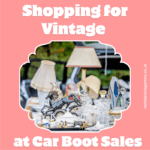Hornsea Pottery is an iconic British brand who have a long history of making innovative ceramics for the home. they were based in Hornsea, East Riding of Yorkshire in England from the 1950s to the 1990s. Their products are highly collectable today amongst serious enthusiasts searching for the rarer, earlier pieces from the 1950s and 1960s.
However there is also a new generation who are discovering the joy of collecting Vintage Hornsea Pottery. The tableware and storage jars from the 1970s and beyond have particular appeal due to their stylish designs, and add something different to those wishing to add to their own decorative style for the home. The factory closed in the year 2000, but its heritage lives on as their design archive has now been opened up to licenceable products.
History
Hornsea Pottery was founded by brothers Colin and Desmond Rawson in 1949, initially making Plaster of Paris souvenir items from home. However, after investment from friend Philip Clappison, they bought their first kiln and began to work in clay. Products sold well and in 1950 they moved to larger premises at The Old Hall in the Hornsea Market Place.
The brothers began to notice the potential in Clappison’s son, John who was studying for his national diploma in design (ceramics) at Hull Regional College of Arts. They gave him the opportunity to experiment and develop his ideas. This led to the successful launch of the Elegance range of vases, giftwares and dishes in 1955.
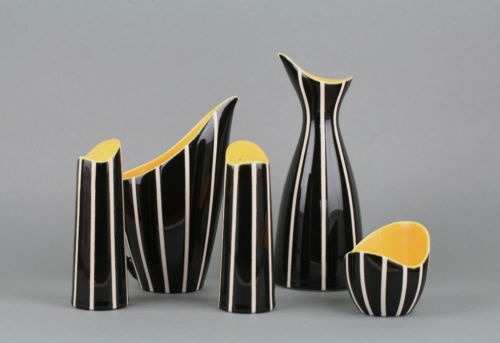
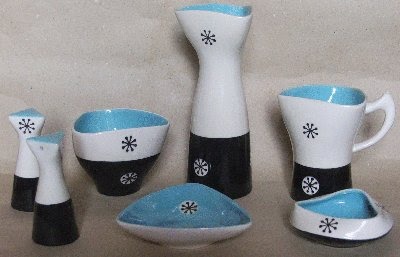
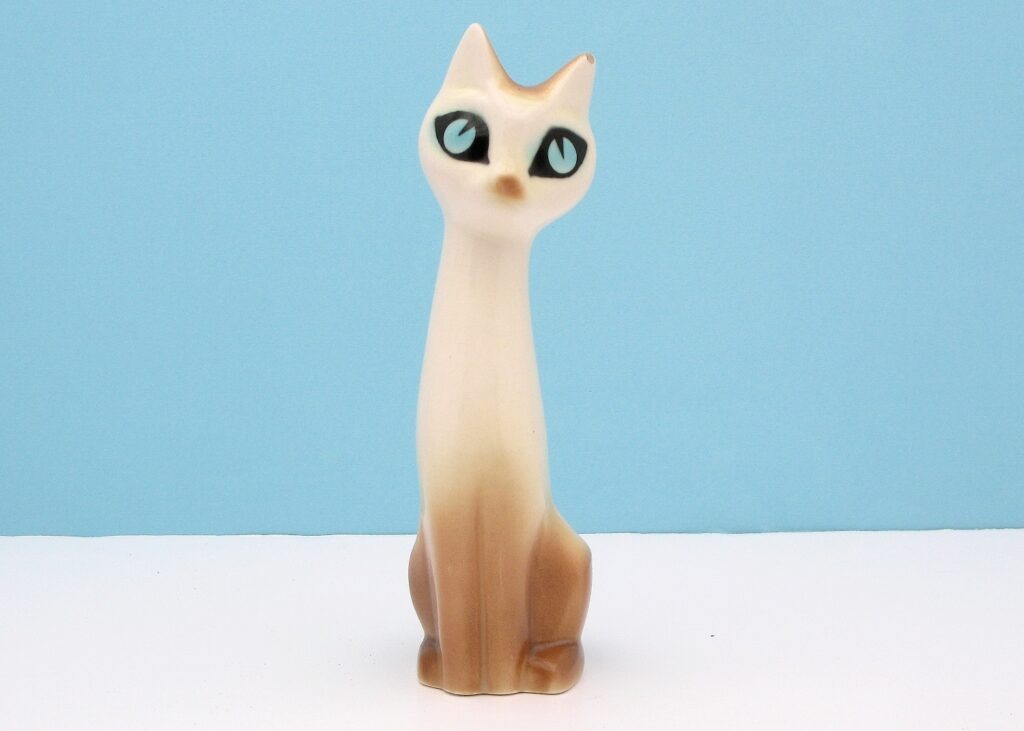

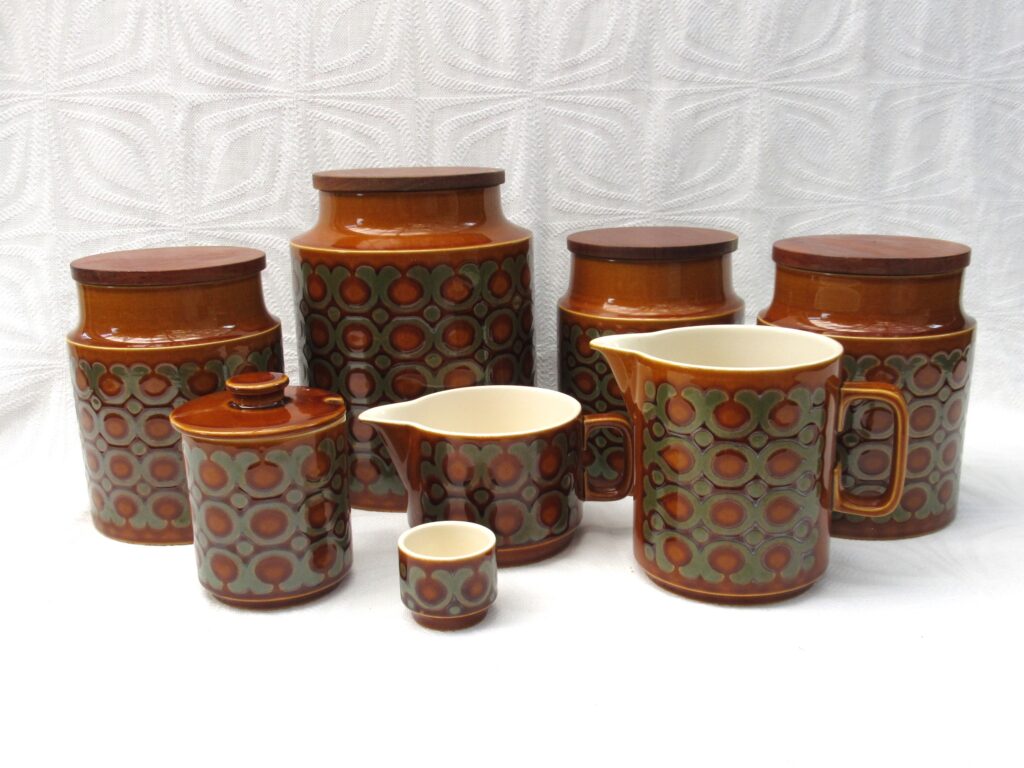
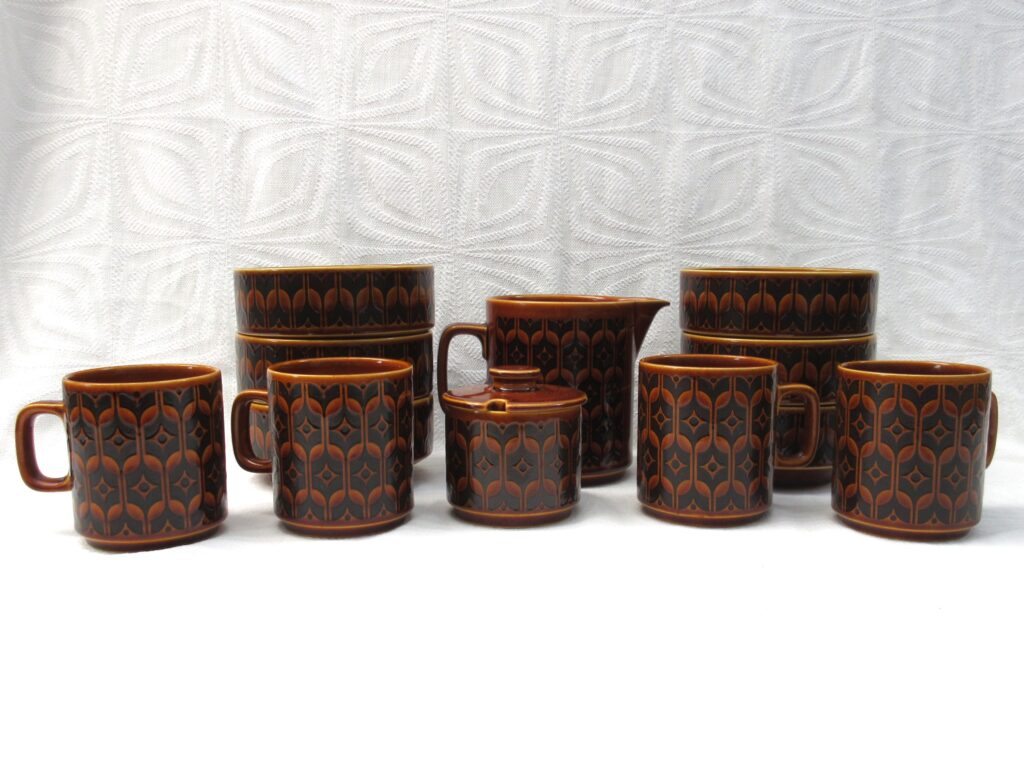
The site was also open to visitors and offered factory tours, an adventure playground with remote-control boats, a garden centre, a lake with picnic area, various cafés, plus various animal exhibits. There were also seconds shops, selling items at reduced prices, creating the one of the first American style factory outlets in the UK.
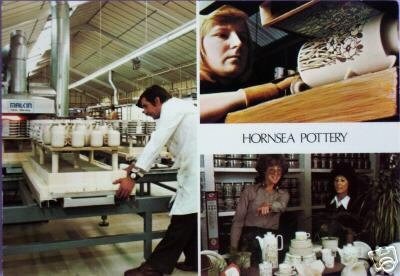
Further developments in the 1970s saw John Clappison leaving in 1972 and in 1974, a second factory opened in Lancaster. Here they developed a new Vitramic high temperature glazing to Vitrification technique, similar to that used in glass making.
This marked the start of mechanisation of production. The first complete tableware made at this site was Contrast, designed by Martin Hunt and sold well into the 1990s. John rejoined the factory in 1976 and created the Impact tableware range.
In its heyday, Hornsea tableware ranges were sold worldwide for over 20 years and many were accepted for inclusion on the Design Centre Index. At one point the Heirloom range had to be limited to a quota basis to department stores, in order to keep up with demand.
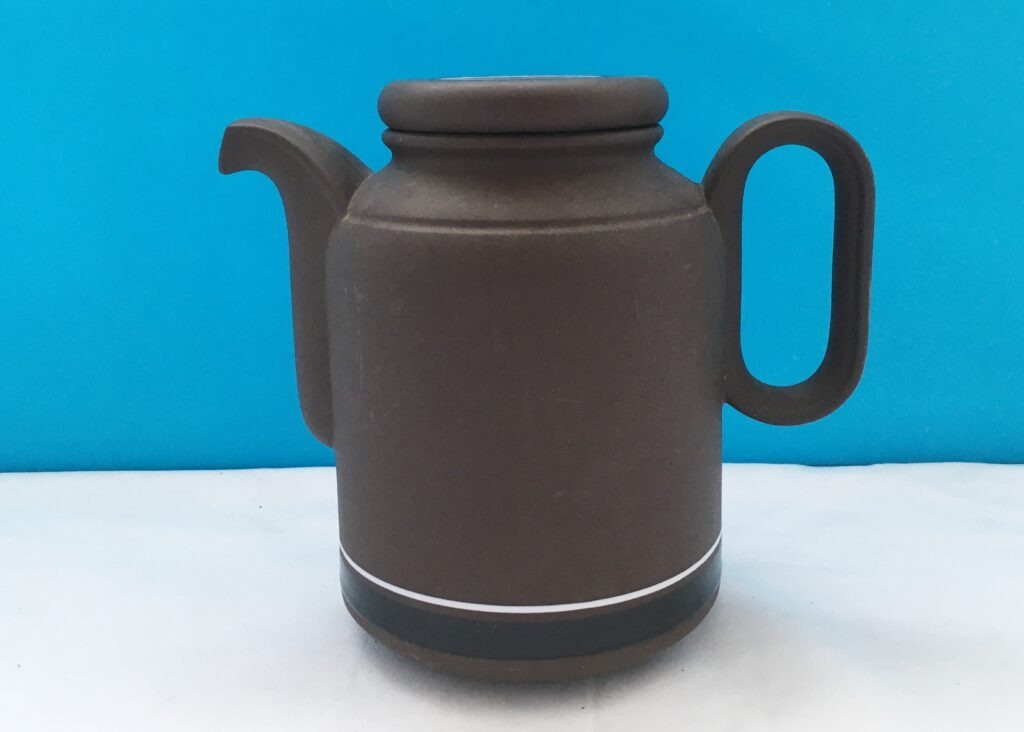
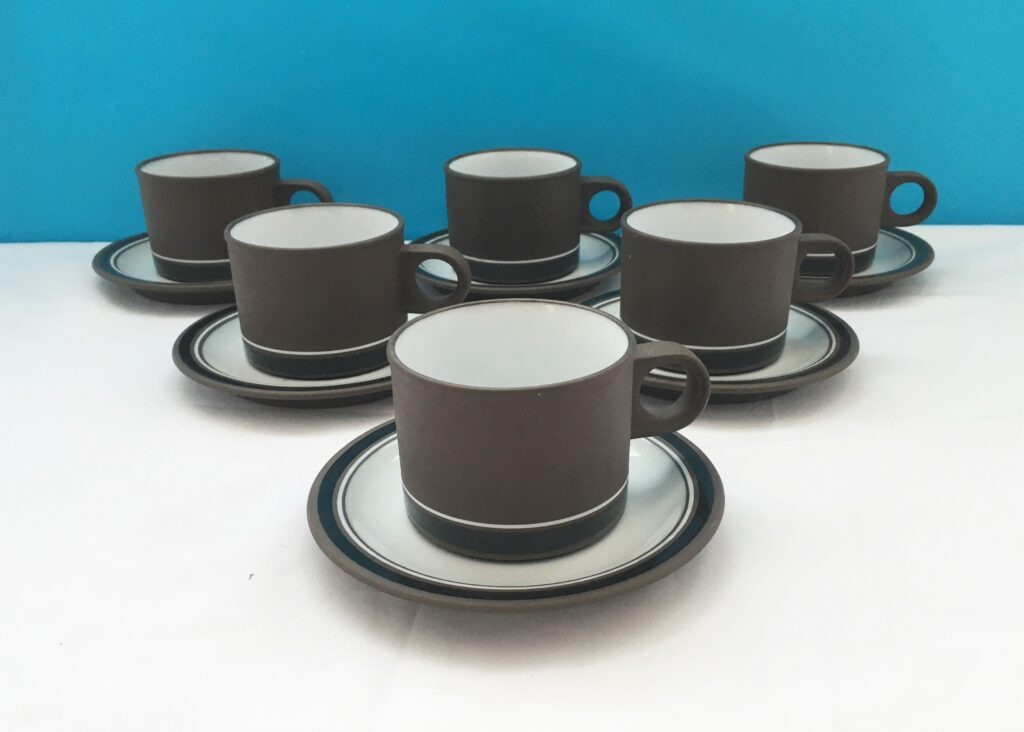
In the early 1980s, Hornsea suffered due to the recession and the influx of cheaper foreign imports. The Lancaster factory eventually closed in 1988. In the early 1980s Clappison designed the fashionable Strata range of trinket boxes in pastel colours, and his People series from this time are now very hard to find. He was made redundant in 1984 and went on to work for Royal Doulton.
Despite continuing to operate in the 1990s, the company eventually went into receivership in the year 2000 and the factory sadly closed for good. The Hornsea Freeport Shopping Village now trades on the site where the old factory buildings once stood.
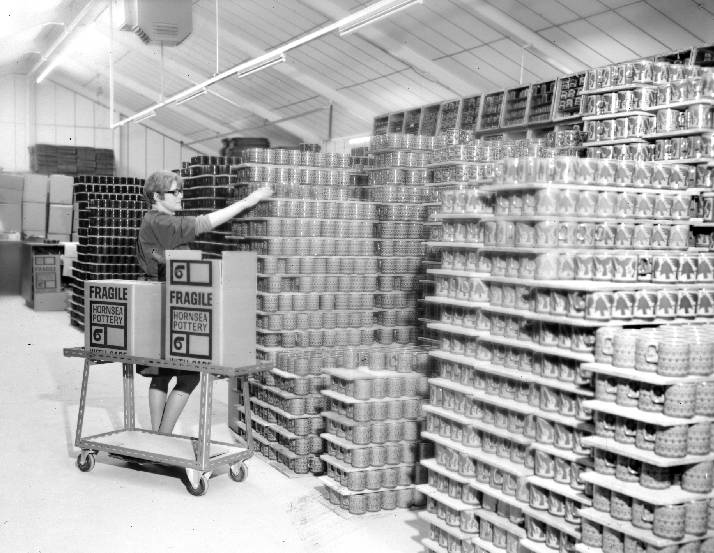
Collectors Guide
1950s
Pieces in this era tended to be smaller decorative homewares like vases, planters, cruets, butter dishes, jugs etc. These are quite hard to find today, so command higher prices.
Homeware ranges produced were Elegance, Tricorn, Coastline, Polka Dot, Home Décor as well as various slipware. Animals designed by Marion Campbell, such as her arctic fox and weasel, are very sought after today.
Look out for pieces by other designers, Sara Vardy, Michael Walker, George Ratcliffe, Robin Pavitt and model-maker Alan Luckham who were employed by the factory at this time.
Also popular were the Fauna range which are easily found by collectors today. Note that the factory sold the moulds and rights to Fauna to Eastgate pottery, Withernsea in 1967 who continued production. Hence this range sell for lower prices than the original Hornsea pieces.

1960s
The factory continued to make smaller homewares, and early 1960s ranges include Coronet, Summit, Alpine, Classic Doric, Cascade, Springtime, Summertime, Rainbow, Tanglewood, Studiocraft, Edenfield, Imprest and Gaiety. There were also bird ashtrays and spoon rests designed by Clappison, along with Tasty & Keyhole Dishes. Mug production began and cruets in Alpine, Spruce, Harlequin, Animal, and Geometric designs. These are all quite hard to find now, so the buying price is reflected.
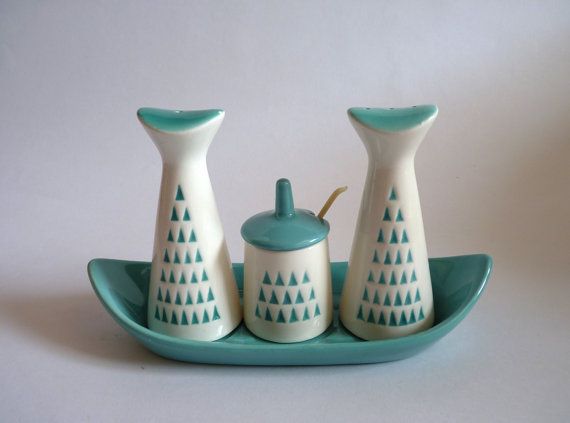
In the mid-1960s tableware ranges began to appear. The first was County in 1965, then Heirloom and Bronte from 1967. Heirloom was originally produced in Lakeland Green, Midnight Blue and Autumn Brown. Midnight Blue wasn’t a popular colour then, hence the factory made less, however it has become very collectable today. Scroll is also popular amongst collectors and was based on Heirloom, featuring storage jars with name of intended food stuff on them.
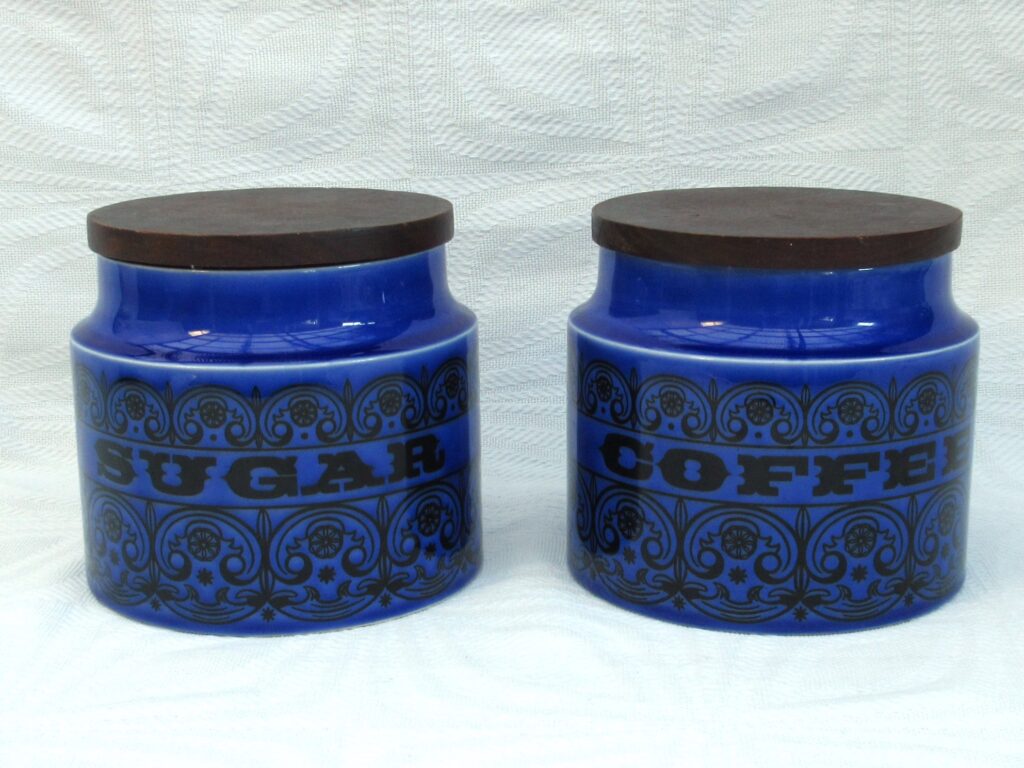
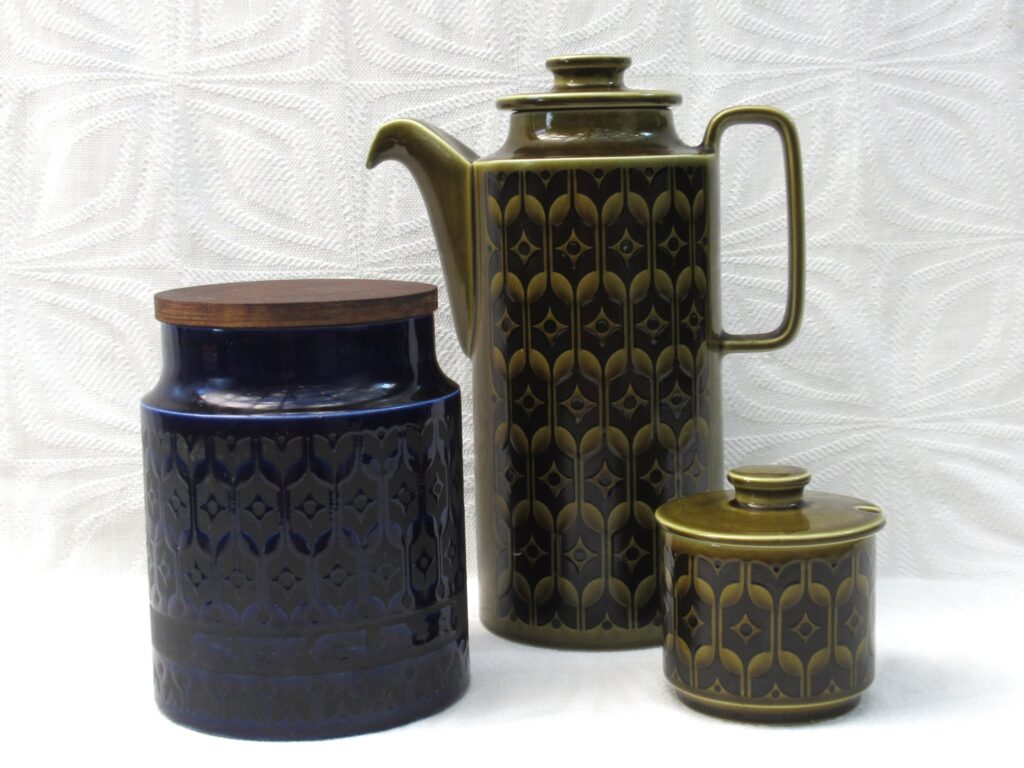
1970s
As well as continuing to make newly introduced tableware ranges such as Heirloom and Bronte, new designs appeared in the same shape, including Saffron, Tapestry and Fleur. Mugs were popular during this time also and look out for rarer ones with designs by John Clappison, Alan Luckham et al. There was also a World’s Greatest Range and Zoodiac, all very popular to collect today.
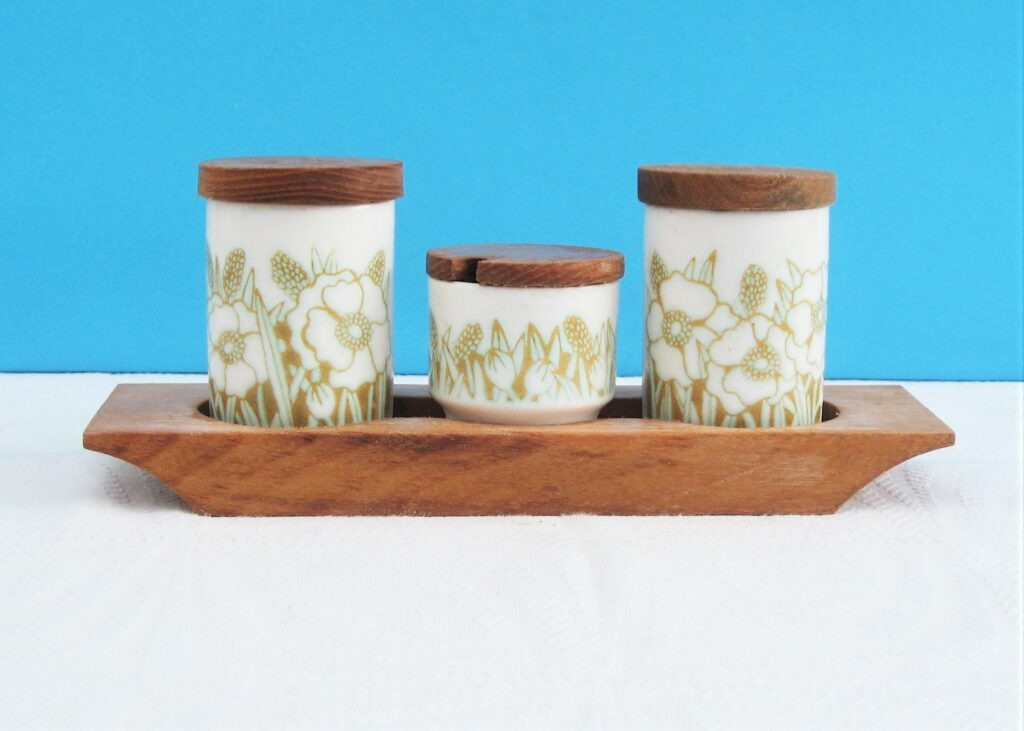
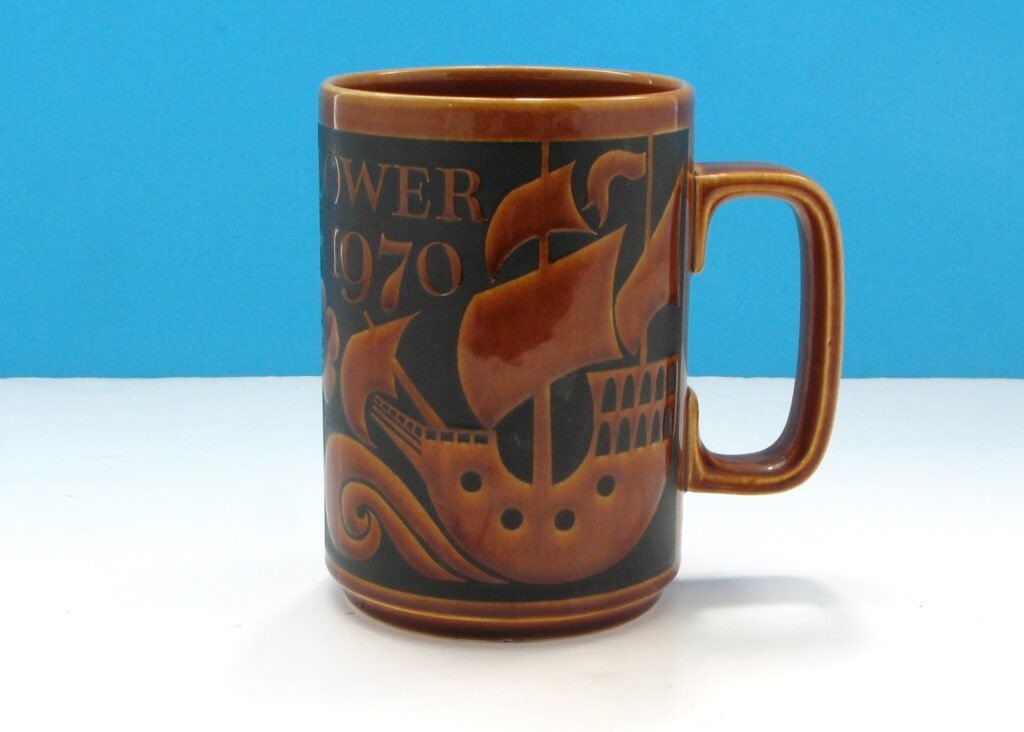
New Vitramic production techniques from 1974 brought the masculine looking Contrast tableware range with matt finish as well as Concept, a more feminine partner, designed by Queensberry-Hunt. There was also Impact, Charisma, Cornrose, Cascade, Harmony, Love story, Danube using the same shapes as Contrast, but with the base Alaska white glaze (also available as a separate set). Palatine was a matt glazed range like Contrast, but with etched brown classical design. All were durable and chip resistant, and suitable for use in the oven, freezer and microwave.

1980s
A continuation of designs from the mid to late 1970s, Midas (similar to Palatine but with gold print) and Cinnamon ranges (with biscuit body) were introduced. There was also Ebony, designed by Martin Hunt, considered to be ahead of its time. Roundel and Tundra are rare cylindrical vases produced in the 1980s. The Strata range of trinket boxes, in pastel colours, were designed by John Clappison in 1981. He also designed his People series (very hard to find today) and Oceana tableware before he left for Doulton in 1984.
The Stripe range was introduced in the mid-1980s and based on the Heirloom shapes. Once again they had printed words on the front of the intended items to be stored. Other tableware ranges included Bouquet and Cirrus (based on the Concept range). A new tableware shape was used for the Passion and Desire ranges. There was also Seasons and Seville.
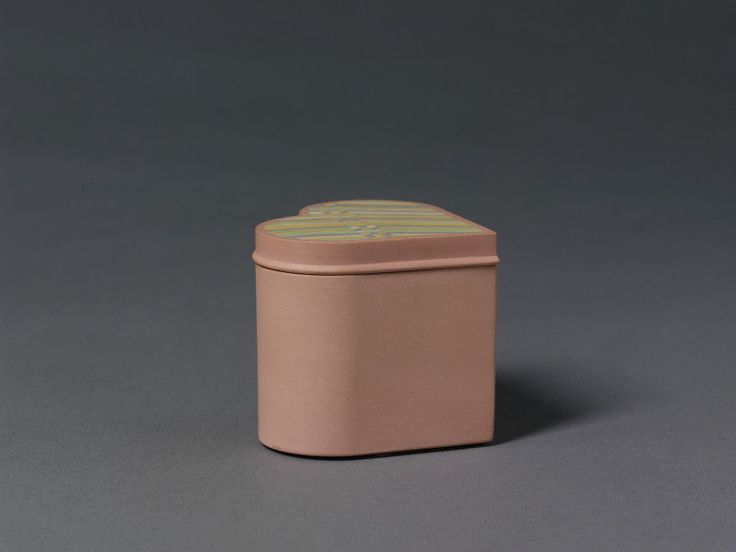

1990s
Hornsea continued to make their most popular tableware ranges, and of the new ones, the most notable is the mediteranean inspired Yeovil range appeared in 1990. This is now popular with collectors. There was other lesser-known items produced during this time and a good place to get some ideas is Mr Pottery website. These ranges could the sought after Hornsea items of the future!
Hornsea Revival (2010s onwards)
Hornsea is still a brand, and have licenced out their design archive to various new makers. You can get wallpaper, notebooks, tea towels, lampshades, gifts and also pottery once more. Rachel’s Vintage & Retro stock a number of New Hornsea Pottery items from Magpie, who have started to reissue and make Hornsea ware again, fully licenced by the brand.
Useful resources
Mr Pottery – Stocks a wide range of discontinued Hornsea Pottery –https://mrpottery.co.uk/pages/hornsea-pottery
Hornsea on Pinterest – https://at.pinterest.com/HornseaPottery/_saved/
Hornsea Research and Collectors Society – https://hornseapottery.co.uk
Hornsea Museum – https://hornseamuseum.co.uk
East Riding Archives Hornsea Exhibition –https://www.eastridingarchives.co.uk/archives-online/hornsea-pottery/
Hornsea Official Site – https://hornseapottery.com
This blog post is written by Rachel Toy, owner of Rachel’s Vintage & Retro. I am a 20th Century Vintage Blogger and Dealer writing about the vintage lifestyle, collecting, nostalgia and selling vintage. I also sell carefully curated 20th century antiques and collectables from my online vintage shop. I am happy to work with related brands on collaborations and also accept guest blogs. Find out how to work with me.
